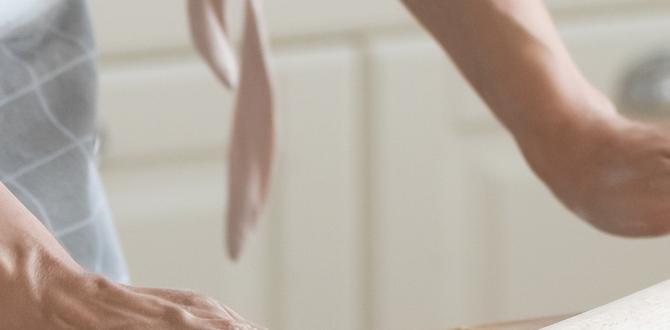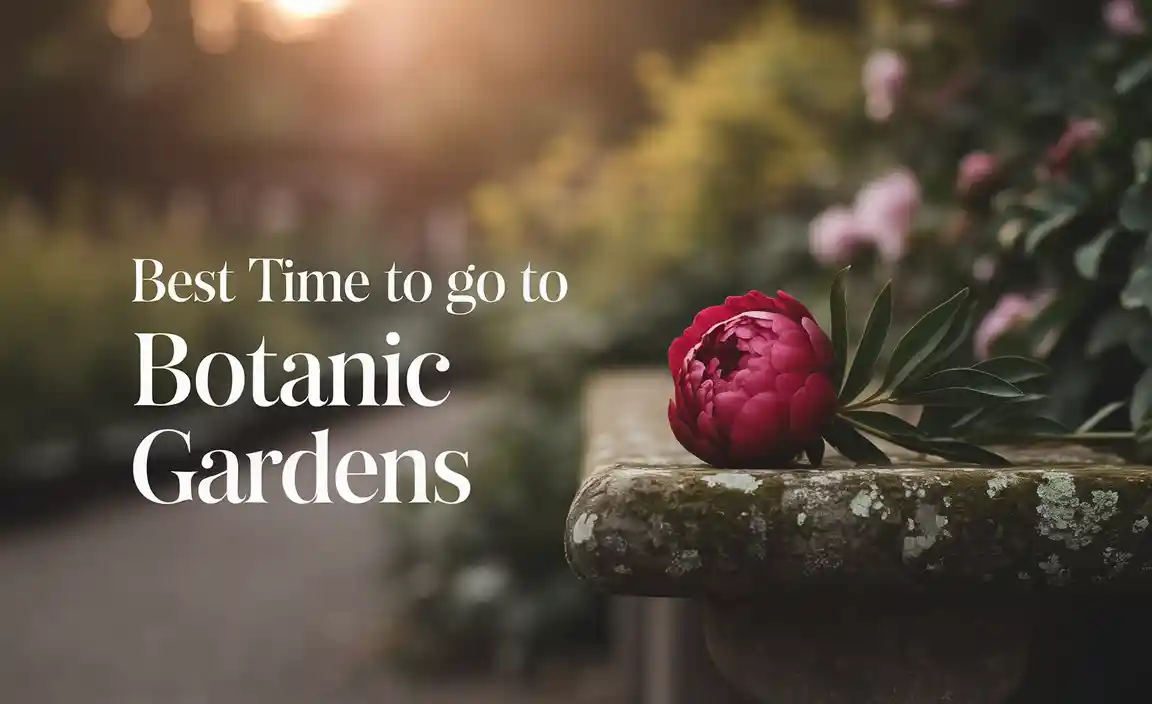Quick Summary: Indoor spotlights are excellent for highlighting plants, artwork, or architectural features, creating cozy ambiance, and boosting plant growth with targeted light. Choose the right type, brightness, and color temperature to suit your needs, ensuring they add both beauty and function to your home. This guide helps you select and use them effectively.
Welcome, fellow plant lovers and home decorators! Ever walked into a room and felt something was missing? Maybe that beautiful houseplant you just bought looks a little lost in the corner, or perhaps a favorite piece of art isn’t quite having its moment. This is where indoor spotlights come to the rescue! They’re like tiny stage managers for your home, directing attention exactly where you want it. But with so many options, picking the right ones can feel a bit overwhelming, right? Don’t worry, I’ve been there! We’ll walk through everything, from understanding what makes a spotlight tick to choosing the perfect one for your leafy friends or your most cherished possessions. Get ready to make your indoor space truly shine!
What Exactly Are Spotlights for House Indoor?
Think of an indoor spotlight as a focused beam of light. Unlike a general room light that spreads illumination everywhere, a spotlight concentrates its light onto a specific area, object, or spot. This makes them incredibly versatile for enhancing your home’s décor, drawing attention to beautiful plants, or even providing extra light for tasks.
In the context of home lighting, “spotlights” usually refer to fixtures designed to project a narrow beam. This can include recessed ceiling lights with directional beams, track lighting systems where individual spotlights can be moved, or even small, adjustable lamps that sit on shelves or the floor. The key is their ability to direct light precisely.
How They Differ from Other Lights
It helps to understand how spotlights stand out from the crowd of indoor lighting options:
- General Lighting: This is your main light source, like a central ceiling fixture or ambient lamps, meant to illuminate the entire room and make it safe to move around. Spotlights are accent lights; they add to, rather than replace, general lighting.
- Task Lighting: This is light designed for specific activities, such as reading lamps next to a chair or under-cabinet lights for your kitchen counter. While some spotlights can be used for tasks (like highlighting a workspace), their primary purpose is often decorative or plant-focused.
- Accent Lighting: This is where spotlights truly shine! Accent lighting is designed to draw attention to specific features – artwork, plants, architectural details, or textures. Spotlights are the perfect tool for this.
Why You Might Want to Use Spotlights Indoors
There are so many wonderful reasons to incorporate spotlights into your home. They’re not just for fancy galleries or shops anymore!
- Highlighting Decor: Got a stunning painting, a striking sculpture, or an interesting architectural nook? Spotlights can make these features pop, turning them into focal points of your room.
- Plant Growth: This is a big one for us plant enthusiasts! Many indoor plants, especially those that love bright light like succulents or certain flowering varieties, don’t get enough natural sun indoors. Spotlights, especially grow lights designed as spotlights, can provide the necessary spectrum and intensity to keep your green friends thriving and even encourage blooming.
- Creating Ambiance: A well-placed spotlight can create pockets of warmth and intimacy, making a large room feel cozier or adding a touch of drama. Think of a spotlight on a textured wall or a collection of photos.
- Improving Functionality: While not their main job, spotlights can also enhance areas that need a bit more light for specific activities, like a display shelf or a hobby area.
Types of Spotlights for Your Home
When you start looking, you’ll see a variety of spotlight types. Each has its perfect place and purpose. Let’s break down the common ones:
1. Recessed Ceiling Spotlights (Downlights)
These are probably what you picture when you think of modern lighting. They are installed directly into the ceiling, with the fixture sitting flush or slightly below the surface. They offer a clean, minimalist look.
- Pros: Sleek, unobtrusive design; good for general accent lighting and highlighting specific areas without visible fixtures. Excellent for creating a sophisticated look across a room.
- Cons: Require professional installation (or significant DIY comfort with electrical work); can be less flexible once installed if you want to change the light direction significantly.
- Best For: General accent lighting, highlighting walkways, creating a uniform lighting scheme, or directing light onto specific furniture or plants directly below.
2. Track Lighting Systems
Track lighting consists of a metal track mounted to a ceiling or wall, with one or more adjustable spotlight heads attached. The beauty here is flexibility – you can often slide the spotlights along the track and pivot them to point wherever you want.
- Pros: Highly adjustable and versatile; easy to reposition or add more lights later; great for rooms where you might want to change the focus of your lighting over time.
- Cons: The track itself can be a visible design element that might not suit all decor styles; can sometimes look a bit commercial if not chosen carefully.
- Best For: Art galleries, kitchens, living rooms, or any space where you need to change the lighting direction frequently. Ideal for highlighting different pieces of art or plants as your decor evolves.
3. Wall-Mounted Spotlights (Sconces)
These are mounted directly onto your walls. They come in many styles, from sleek, modern designs pointing upwards or downwards to more traditional articulating arms that allow you to direct the light. Some wall-mounted spotlights are designed specifically for uplifting plants to draw the eye upwards.
- Pros: Can add decorative flair to walls; good for highlighting artwork or plants mounted on the wall or in corners; doesn’t require ceiling access for installation.
- Cons: May require wiring to the junction box (though plug-in options exist); placement is fixed once installed.
- Best For: Accentuating artwork, highlighting architectural features on the wall, or providing directional light in areas without ceiling access.
4. Table and Floor Spotlights
These are freestanding units. Think of adjustable reading lamps with a focused head, or more decorative “up-lights” that can be placed behind a plant or in a corner to cast a glow upwards. Some smaller, adjustable spotlights can be placed on shelves or furniture.
- Pros: Extremely flexible in placement; no complex installation required (usually plug-and-play); great for renters or those who like to rearrange their furniture often.
- Cons: Cords can sometimes be messy; might not offer the same sleek, integrated look as recessed lighting.
- Best For: Highlighting specific objects on furniture, creating mood lighting in corners, or adding targeted light for reading or hobbies. Small adjustable units are fantastic for nudging light onto smaller plants on shelves.
5. LED Spotlights (The Modern Standard)
While not a type of fixture itself, LED technology is now the dominant choice for spotlights, and for good reason. Most new spotlights you buy will be LED.
- Pros: Highly energy-efficient; incredibly long lifespan (saving you money and hassle); produce less heat than older bulb types (important for sensitive plants and safety); available in a wide range of colors and brightness levels.
- Cons: Higher upfront cost than some older technologies (though quickly pays for itself).
- Best For: Pretty much all applications! Especially recommended for plant lighting due to their efficiency and cooler operation.
Key Factors to Consider When Buying
Now that you know the types, let’s dive into what really matters when you’re picking out spotlights for your home. It’s all about matching the light to your needs!
1. Brightness (Lumens)
Lumens measure how much light a bulb or fixture emits. More lumens mean a brighter light. For accent lighting, you typically don’t need extremely high lumens unless you’re trying to create a very dramatic effect or cover a large area.
- For Artwork/Decor: 150-300 lumens per spotlight is often sufficient to draw attention without being overpowering.
- For Small Plants: 300-500 lumens might be good, especially if the plant needs a decent amount of light.
- For Larger Plants or Plant Groups: You might need 500-1000+ lumens, especially if they are considered “high-light” plants.
It’s also about the beam angle. A narrow beam angle (like 10-30 degrees) creates a tight, concentrated spot, perfect for highlighting a single object. A wider beam angle (like 40-60 degrees) will spread the light more, good for illuminating a smaller area or a plant with a fuller canopy.
2. Color Temperature (Kelvin)
This refers to the color of the light itself. It’s measured in Kelvin (K). Lower Kelvin numbers, like 2700K, produce a warm, yellowish light, similar to incandescent bulbs. Higher Kelvin numbers, like 5000K or 6500K, produce a cooler, bluer light, which can feel more natural or crisp. For plant growth, a broader spectrum is often ideal.
| Kelvin (K) | Light Appearance | Best Uses |
|---|---|---|
| 2700K – 3000K | Warm White (Yellowish) | Creating a cozy, inviting atmosphere; accentuating warm-toned decor. Less ideal for plants needing bright, natural light. |
| 3500K – 4000K | Neutral White (Crisp White) | Good all-rounder; works well for general accent lighting and can be acceptable for many houseplants. |
| 5000K – 6500K | Cool White/Daylight (Bluish/Bright White) | Mimics natural daylight; excellent for task lighting, showcasing vibrant colors, and ideal for grow lights supporting plant photosynthesis. |
3. Color Rendering Index (CRI)
The CRI tells you how accurately a light source reveals the true colors of objects. It’s a scale from 0-100, where 100 is the best. For highlighting artwork or vibrant plants, a high CRI (90+) is essential so that you see the true richness of colors. For general ambiance, a slightly lower CRI might be acceptable.
When choosing spotlights, especially for artwork or plants, look for a CRI of 90 or higher. This ensures that the colors of your plants’ leaves and flowers, or the true hues of your artwork, are displayed beautifully and accurately.
4. Wattage and Energy Efficiency
Wattage indicates how much energy the bulb consumes. While older bulbs used wattage to indicate brightness, with LEDs, it’s more about energy usage. Look at lumens to determine brightness. LEDs are incredibly efficient, typically using 75-80% less energy than incandescent bulbs. This means lower electricity bills and a smaller environmental footprint – something I’m always a fan of!
For example, a 5-watt LED spotlight might produce the same brightness as a 50-watt incandescent spotlight, saving significant energy.
5. Fixture Type and Design
As we discussed, the type of fixture (recessed, track, wall-mounted, etc.) needs to fit your space and your aesthetic. But also consider the material, finish, and overall style of the spotlight itself. Does it complement your existing decor? Is it adjustable?
6. Features for Plant Spotlights
If your primary goal is plant growth, look for spotlights specifically marketed as “grow lights” or designed with a spectrum suitable for plant photosynthesis. Many full-spectrum LED grow lights are now available in spotlight or directional bulb formats.
Key features to look for in plant spotlights:
- Full Spectrum: Mimics natural sunlight, providing a balance of red and blue light essential for different stages of plant growth.
- Adjustable Arm/Head: Allows you to position the light perfectly over your plant as it grows.
- Lower Heat Output: Essential to avoid burning delicate leaves. LEDs excel here.
- Appropriate Wattage/PAR: Photosynthetically Active Radiation (PAR) is a more technical measure for grow lights, indicating the light that plants can actually use. While lumens are for human eyes, PAR is for plants. Many grow light manufacturers will provide PAR information. A good starting point for many indoor plants under supplemental lighting might be a PAR value of 100-200 µmol/m²/s at the plant’s canopy.
How to Use Indoor Spotlights Effectively
Just having spotlights isn’t enough; it’s how you use them that makes the magic happen! Here are some tips for placement and application.
Highlighting Artwork and Decor
This is where spotlights really shine. The goal is to draw the eye to the object without the light being distracting or creating glare.
- Choose the Right Angle: For flat artwork, a common technique is to position the spotlight at a 30-degree angle from the vertical. This helps illuminate the surface evenly and avoids reflections from the frame or glass.
- Distance Matters: The closer the spotlight, the more concentrated the beam. Further away, it will cover a wider area. Experiment to find the sweet spot that highlights your object without washing it out.
- Avoid Glare: If you see a harsh reflection, your spotlight is likely too close or at the wrong angle. Sometimes, using a spotlight with a narrower beam angle can help focus the light precisely on the artwork.
- Consider Multiple Lights: For larger pieces, two smaller spotlights can provide more even illumination than one large one.
Spotlighting Your Houseplants
Transforming a plant corner from overlooked to outstanding is one of my favorite uses for spotlights!
- Placement for Aesthetics: Position spotlights to cast a glow upwards onto the foliage, highlighting interesting leaf shapes or colors. Placing a light behind a plant can create a beautiful silhouette effect against the wall or a curtain.
- Placement for Growth: For plants that need more light, position the spotlight directly above or at an angle that ensures the most important parts of the plant (like the leafy crown) receive adequate illumination. Follow the plant’s natural growth habit – if it grows upwards, light from above is often best.
- Beam Angle for Fullness: For plants with dense foliage, a slightly wider beam angle might be better to ensure light reaches the inner leaves. For plants with a single focal point (like a flowering stem), a narrower beam is ideal.
- Use as Grow Lights: If you’re using a spotlight as a grow light, ensure it offers a suitable spectrum (often full spectrum or with added red/blue wavelengths) and is bright enough for your specific plant’s needs. Check the manufacturer’s recommendations for distance and duration.
Creating Ambiance and Mood
Spotlights can sculpt the feel of a room.
- Up-lighting: Placing a spotlight on the floor behind a large plant, a piece of furniture, or in a corner can cast a dramatic upward glow, adding depth and warmth.
- Washing Walls: Aiming a spotlight broadside against a textured wall or a wall with interesting features (like exposed brick) can highlight that texture and add visual interest.
- Accentuating Architectural Features: Did you know spotlights can highlight a beautiful fireplace, a built-in bookshelf, or even a ceiling beam? Aim your light to emphasize the lines and forms you love.
- Layering Light: Spotlights are best used in conjunction with other lighting. Combine them with ambient and task lighting to create a layered and dynamic lighting scheme in your home.
<h2 id="choosing-between-spotlights-and-grow-



